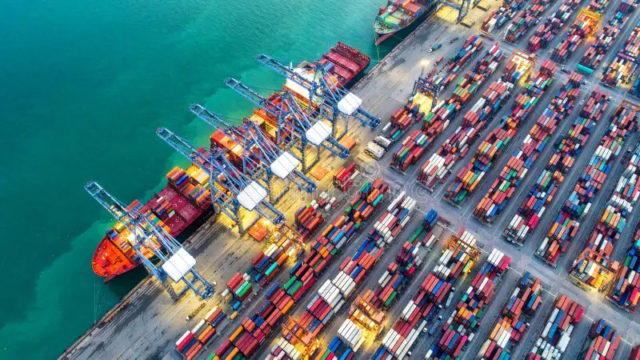What Are Retaliatory Tariffs? A 2025 Guide for Vietnam's Exporters

Sep 15, 2025
Last updated on Sep 15, 2025
Retaliatory tariffs are no longer a distant concept discussed in international economic news. With the United States officially imposing an average 20% tariff on Vietnam's key exports like textiles, wood, and electronics, it has become a tangible challenge, posing a direct threat to the revenue, profits, and market share of thousands of businesses. This is not just a cost risk; it is a real test of the management skills and adaptability of corporate leadership.

Key takeaways
- Retaliatory tariffs are a business reality, not a theoretical risk, directly impacting the profitability and even the survival of exporting enterprises.
- These tariffs not only increase costs but also reduce competitiveness, lead to market share loss, and cause industry-wide supply chain disruptions.
- A 20% tariff from the US forces businesses to either share the burden with their partners or accept a significant reduction in profit margins.
- Businesses cannot afford to wait; they must act on multiple fronts: legal compliance, market restructuring, commercial negotiation, and strengthening internal capabilities.
A retaliatory tariff is a trade defense instrument used by one country to respond to actions by a trading partner that it deems unfair. In a global context where economic powers are increasingly prioritizing domestic protectionism, a clear understanding of retaliatory tariffs and their impact has become a survival requirement for maintaining competitiveness and ensuring sustainable growth.
What are retaliatory tariffs and when are they applied?
A retaliatory tariff is an additional import duty that one country (Country A) imposes on goods from another country (Country B) as a legal “countermeasure” within the framework of the World Trade Organization (WTO) to rebalance a trade advantage. According to economists, while not a frequently used measure, it can be lawfully applied in necessary situations, provided there is sufficient evidence of damages and adherence to WTO procedures.
Unlike standard import tariffs, retaliatory tariffs are temporary and have the specific goal of restoring bilateral trade equilibrium. Their application must be based on clear evidence of the damages suffered by the domestic industry due to unfair competitive practices.
A country may apply retaliatory tariffs when there is evidence that its trading partner is engaging in unfair competitive practices.
- Dumping occurs when a business sells products to another market at a price lower than its domestic market price, creating an unfair competitive advantage that can harm the importing country’s industry.
- Unfair subsidies happen when a government subsidizes its domestic industries through various means such as tax breaks, preferential loans, or providing raw materials at below-market prices, giving them a price advantage in exports. This creates an uneven playing field in the international market.
- Additionally, the imposition of adverse trade barriers, such as unreasonable technical hurdles, difficult-to-achieve standards, or discriminatory tariffs, can also lead to the application of anti-dumping duties or retaliatory tariffs.
The impact of retaliatory tariffs on Vietnamese businesses
The impact of retaliatory tariffs on Vietnamese businesses extends far beyond increased costs, permeating every aspect of their operations. From competitiveness and financial structure to production and risk management, all areas require adjustment to adapt to this new reality.
This is the most immediate and evident impact. A 20% retaliatory tariff from the US causes the price of Vietnamese goods to soar, making it easy for businesses to lose market share to competitors like Bangladesh, India, or Cambodia. Many existing export contracts are at risk of being shifted to other suppliers, especially as US importers actively seek alternative sources to avoid the tax burden.
According to industry association surveys, nearly 70% of exporting businesses reported that they have had to adjust their selling prices or renegotiate with customers to share the tariff costs. However, the bargaining power of Vietnamese businesses is often limited, particularly when dealing with large corporations that have multiple sourcing options.
Decline in revenue and profit
As market share shrinks, orders from major partners will decrease sharply. This directly leads to a decline in revenue, erodes profit margins, and forces businesses to face difficult decisions such as scaling down production or laying off workers. This is a period where many companies must make tough choices about organizational restructuring to optimize operational costs.
Businesses in the textile industry report that their profit margins have fallen from 3-5% to as low as 1-2%, forcing them to cut other costs or operate with minimal profit. Some have had to halt expansion plans and switch to a short-term “survival mode.”
Retaliatory tariffs are often accompanied by stricter inspections of product origin. Businesses risk being hit with much higher tariffs (potentially up to 40%) if they cannot prove a sufficiently high level of local value-add and are suspected of being a “transshipment” point for goods from other countries to evade tariffs. While the WTO stipulates that 30-37% of production value in Vietnam is sufficient for a “Made in Vietnam” label, experts recommend achieving a localization rate of over 50% to be safe.
Many businesses have discovered that their proof-of-origin documentation is not robust enough, especially when using a large amount of raw materials imported from China. This has forced them to invest in better record-keeping systems and potentially change material suppliers to ensure compliance with origin regulations.
Supply chain disruptions and ripple effects
The impact is not limited to direct exporters. Businesses throughout the supply chain—including raw material suppliers, logistics providers, and industrial real estate firms—are also indirectly affected as demand for warehousing, transportation, and materials declines. This creates a domino effect, spreading negative impacts throughout the entire manufacturing ecosystem.
Logistics companies have reported a 15-20% drop in exports to the US in the first quarter after the tariffs were imposed. Raw material suppliers have also had to adjust their production plans due to a sharp decrease in orders from exporting businesses.

The hardest-hit industries
Textiles and Footwear: These are two key, labor-intensive export industries facing immense price competition. The textile industry, with annual exports of around $44 billion to the US market, is facing a major challenge as competitors from South Asia have the advantage of lower labor costs.
Wood and Wood Products: This sector is also heavily impacted as the US is its largest consumer market, with a turnover of $5.6 billion in the first seven months of 2025. The 20% retaliatory tariff directly affects the entire industry, from primary wood processors to high-end furniture manufacturers.
Seafood: Products like shrimp and pangasius, which frequently face trade defense investigations, are now burdened with additional retaliatory tariffs, severely diminishing their competitiveness.
Electronics and Machinery: This industry has a low domestic value-added ratio due to its heavy reliance on imported components, making it highly sensitive to accusations of origin fraud.
Steel and Metals: Already facing numerous trade defense barriers, this sector now carries the extra weight of retaliatory tariffs, making a difficult situation even worse.
Strategic solutions and direction
To overcome the challenge of retaliatory tariffs, businesses need a comprehensive and systematic approach. Instead of reacting passively, leaders must build a proactive strategy on multiple fronts to not only cope with current difficulties but also create long-term competitive advantages.
- Legal & Compliance: Businesses must proactively master WTO regulations on Rules of Origin (“Made in Vietnam”) and prepare robust documentation to prove compliance when needed. This includes building a traceability system for raw materials, maintaining records that verify the production process in Vietnam, and ensuring full adherence to localization rate requirements.
- Market Diversification: Restructure and diversify export markets to reduce dependency on a single market, while simultaneously increasing the localization of raw material supplies. This often requires senior personnel with expertise in new markets to lead expansion strategies into regions like the Middle East, Africa, South Asia, or to leverage trade agreements within ASEAN.
- Commercial Negotiation: Proactively renegotiate with import partners to share the tariff burden by adjusting contract terms, while optimizing operational costs to reduce product prices. Many successful businesses have negotiated for their US customers to accept a 10-15% price increase instead of bearing the full 20% tariff.
- Capacity Building: To successfully execute these complex strategies, enhancing the management capabilities of the leadership team is mandatory. Specialized training programs on tax risk management, international trade, and responding to policy volatility can systematically upgrade these skills. Investing in professional outsourced HR services can also give businesses access to experienced international trade experts without the high fixed cost of permanent staff.
Retaliatory tariffs are an inevitable part of an increasingly complex global trade landscape. Instead of viewing them as an insurmountable barrier, leaders should see them as a test of their strategic management and adaptability. The first and most urgent step is to immediately direct a review of the company’s dependency on high-risk markets and re-evaluate the rules-of-origin compliance of key products. Proactively building internal strength and developing contingency plans is the way to turn this challenge into a sustainable competitive advantage.

Solve your HR problems!
6th Floor, Star Building, 33 Mac Dinh Chi, Saigon Ward, Ho Chi Minh city, Vietnam




